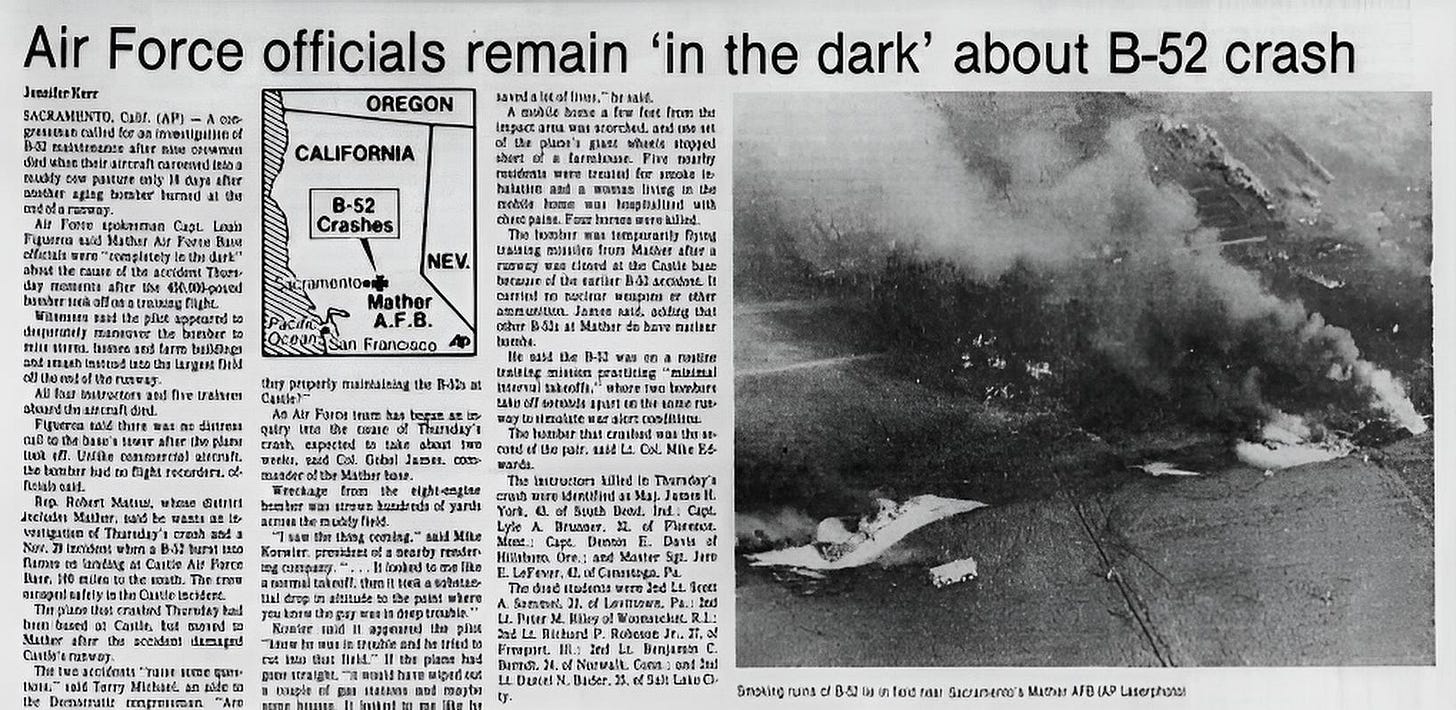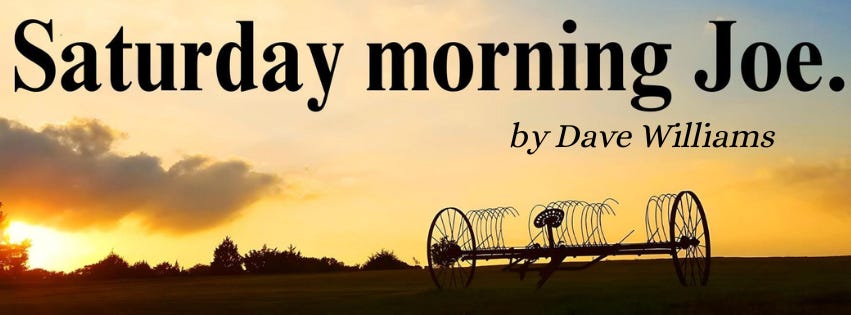The Fog of News – Part II: Skepticism Without Cynicism
Rumors travel faster than ever, but so does doubt. Trust can be rebuilt—not just in news, but in each other.
In The Fog of News Part I, I wrote about my five decades in the radio news industry as the line between news and talk blurred. Truth has always been fragile, but with the rise of political misinformation and social media, opinion and fact became hopelessly entangled. By the early 21st century, the business of providing information felt less like reporting and more like combat. I tried to walk the line, but I eventually got fed up with the whole mess. Now, two years into retirement, I’m gradually recovering.
Part II explores how we can navigate the news with clarity and healthy skepticism.
Thursday morning, December 16, 1982
I’m anchoring the news at KGNR in Sacramento. We learn of a military plane crash at nearby Mather AFB. This was years before the internet, but rumors spread quickly that an Air Force B-52 had crashed while carrying live nuclear bombs. My partner, Bob Nathan, and I mentioned it carefully, stressing that it was hearsay and unconfirmed. Details are sketchy.
While we’re on the air, our General Manager, Robert Henley, rushes into the studio:
“Don’t say anything that will scare people!”
Our instincts had already told us the same. Confirm first. Don’t panic the public.
The rumor was false. Nine airmen were killed in the crash, but there were no weapons on board.
Had this happened 45 years later the rumor would have ricocheted across Twitter, Facebook, Instagram, and every personal text thread within seconds. Unlike 1982, people today don’t need to tune into a broadcast to be bombarded with rumors and speculation.
In those days we were taught: Be first with the facts—but never at the expense of the truth.
Remember the Truth?
Truth is something we value instinctively as children, only to lose sight of in the noise of adulthood.
“The truth … is a beautiful and terrible thing, and should therefore be treated with great caution.”
—J.K. Rowling, Harry Potter and the Sorcerer’s Stone
Here’s the hopeful part: we’re not as gullible as social media makes us look.
The Surprising Insights
Most people are better at spotting misinformation than we think. Research shows that skepticism—“skepticism bias”—is a natural defense. “I don’t know if I believe that” has become a common reflex, and in a strange twist, the rants and insults of social media may actually sharpen our instinct to doubt shocking claims.
Studies show that nearly 75% of U.S. adults can correctly distinguish between real and fake political news headlines. A 2024 News Literacy Project study found that younger generations are especially active in questioning sources, developing habits of independent thinking rather than passive acceptance.
Finding hope in that we can also remember a truth that is usually overlooked:
“Frequent, habitual users [of social media] forwarded six times more fake news than occasional or new users.”
—USC/Yale School of Management research
In other words, most of the rants and false claims come from a relatively small group of highly active users—not the majority. That noisy minority makes the problem look bigger than it really is.
So while the flood of headlines can feel overwhelming, skepticism is our best defense. The key is to verify before sharing—checking multiple sources only takes moments. Or, as I like to say: put up a sign that reads, THE RUMOR STOPS HERE.
Bridging the Divide
The more we question, the more we learn—and learning can bring us closer together. Outrage on social media may suggest we’re hopelessly divided, but scratch the surface and you’ll find shared concerns: safety, fairness, opportunity. We may disagree on the path, but the destination isn’t so different.
Critical thinking isn’t about doubting everything. It’s about curiosity. It’s asking why, listening for perspective, and staying open to the idea that someone else might hold a piece of the truth we don’t.
Conversation Over Combat
Too often we treat discussions like trials: every statement an accusation, every reply a defense. The goal isn’t understanding, it’s winning.
But when the goal is to learn, things change. Strip away the hashtags and the shouting, and you’ll find neighbors, parents, and coworkers worried about the same things you are: family, work, the future.
Listening doesn’t mean agreement; it means giving someone the chance to be heard. True critical thinking also means doubting ourselves—holding our own beliefs to the light and asking, What if I’m wrong? That shift—from arguing to conversing, from defending to listening—can help us rediscover the values we share.
Rebuilding Trust
Critical thinking and honest conversation don’t just protect us from misinformation; they can help restore trust—in the news, and in each other.
Trust shatters when people feel unheard or manipulated. That’s why so many tune out the news altogether. They don’t want lectures; they want respect.
When we approach stories with curiosity—asking Who’s the source? Why are they saying this? What might be missing?—we become active participants instead of passive consumers. That shift alone can begin to rebuild trust.
Rebuilding trust doesn’t mean blind faith. It means leading with curiosity instead of condemnation. It’s not always easy, but it’s a good start.
What Comes Next
If Part I was about stepping back from the fog, and Part II about learning to see more clearly through it, then Part III looks ahead.
Because clarity isn’t the finish line—it’s the starting point. Once we’ve learned to question, to listen, to think critically, we can start rebuilding—not just trust in news, but trust in each other.
That doesn’t mean agreement on everything. It means rediscovering the values that unite us—security, fairness, family, community—and recognizing that most of us are weathering the same storms, even if we’re in different boats.
And here’s the good news: the pendulum is starting to swing back. Even the biggest news organizations are showing signs of fatigue from endless blood battles with their competitors. Audiences are tuning out the noise, and editors are noticing. Quietly, the appetite for shouting matches is shrinking, and the demand for context and clarity is rising.
Skepticism without cynicism is the key—leading to conversations that bring us together instead of tearing us apart.
Because in the end, the fog of news doesn’t have to blind us. With a little light—and a little humility—we can find our way through.
The Fog of News Part III drops Wednesday, September 10th. Subscribe to get it in your email.
If you missed Part I you can read it here.




